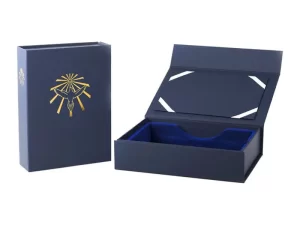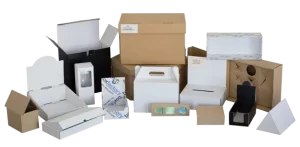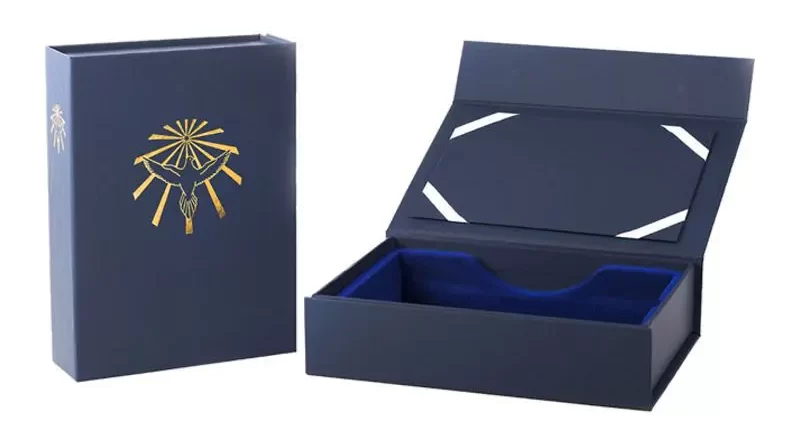Eco-Friendly Techniques Shaping Sustainable Packaging

In the ever-evolving landscape of pillow packaging boxes, the focus has shifted beyond materials to embrace eco-friendly inks and printing techniques. This article delves into the innovative realm of green printing, exploring how environmentally conscious inks and techniques are shaping the future of sustainable packaging.
A Palette of Sustainability
Traditional printing inks often contain petroleum-based components, contributing to environmental harm. Enter vegetable-based inks, derived from renewable resources such as soy, linseed, or corn. These inks offer a sustainable alternative, reducing the carbon footprint associated with traditional inks. Brands adopting vegetable-based inks are not only minimizing their environmental impact but also contributing to a cleaner and greener printing industry.
Water-Based Printing
Water-based printing techniques are gaining prominence as a sustainable alternative to solvent-based methods. Unlike solvent inks that release volatile organic compounds (VOCs) into the atmosphere, water-based inks have a lower environmental impact. The absence of harsh chemicals makes water-based printing a greener choice, aligning with the industry’s shift towards eco-conscious practices without compromising print quality.
Curing Sustainability with Light
UV printing is revolutionizing the printing landscape by offering a more sustainable approach. In traditional printing, inks may take time to dry, emitting VOCs during the curing process. UV printing, however, uses ultraviolet light for instantaneous curing, eliminating the need for harmful solvents. This not only enhances printing efficiency but also reduces the environmental footprint, making UV printing a beacon of sustainability in the world of packaging.
Biodegradable Inks
Biodegradable inks mark a breakthrough in sustainable printing solutions. These inks are formulated with components that break down naturally over time, minimizing their environmental impact. As packaging materials evolve towards biodegradability, the adoption of biodegradable inks complements this shift, ensuring that every aspect of the packaging lifecycle is in harmony with ecological principles.
Recycled Paper and Soy Ink Synergy
The synergy between recycled paper and soy ink exemplifies a closed-loop approach in sustainable printing. Recycled paper, crafted from post-consumer or post-industrial waste, serves as an eco-friendly canvas. When coupled with soy ink, derived from soybean oil, the result is a fully sustainable packaging solution. This collaborative effort not only reduces reliance on virgin materials but also promotes circularity in the packaging industry.
Minimizing Waste, Maximizing Impact

Digital printing technology is emerging as a sustainable champion in the world of packaging. Unlike traditional printing methods that may generate significant waste during setup and color calibration, digital printing allows for precise, on-demand printing. This minimizes material waste and energy consumption, contributing to a more sustainable and resource-efficient printing process.
Clearing the Air for Sustainability
Volatile Organic Compounds (VOCs) present a significant environmental concern in the printing industry. Low-VOC and VOC-free inks have stepped in as a solution to mitigate this issue. By minimizing or eliminating VOCs, these inks reduce air pollution and contribute to healthier indoor air quality. Brands adopting low-VOC and VOC-free inks showcase a commitment to both print quality and environmental stewardship.
Certifications and Standards
Navigating the green custom printing boxes landscape involves adherence to certifications and standards that validate sustainable practices. Certifications such as the Forest Stewardship Council (FSC) for paper sourcing and Cradle to Cradle (C2C) for overall sustainability provide consumers with assurance that the packaging has met stringent environmental criteria. Aligning with these certifications ensures that green printing extends beyond ink choices to encompass the entire packaging lifecycle.
Elevating Brand Perception: Packaging as a Silent Ambassador
Custom packaging is no longer a mere vessel; it serves as a silent ambassador that communicates a brand’s ethos and values. Innovatively designed packaging creates an immediate and lasting impression on consumers. It goes beyond protecting the product; it elevates brand perception, positioning the product as a premium, thoughtful, and distinctive choice in the eyes of the consumer.
Differentiation in a Crowded Market: Beyond the Ordinary
In a saturated marketplace, standing out is paramount. Innovative custom packaging provides a unique avenue for differentiation. Brands that invest in original and creative packaging solutions capture the attention of consumers amidst a sea of competitors. This differentiation becomes a powerful tool for creating brand recall and attracting a loyal customer base.
Consumer Engagement Through Design: An Emotional Connection
Innovative custom packaging is a vehicle for forging emotional connections with consumers. Thoughtfully designed packaging goes beyond aesthetics; it tells a story, elicits emotions, and creates a sense of anticipation during the unboxing experience. This emotional resonance enhances consumer engagement, turning a transaction into a memorable interaction that extends beyond the product itself.
Strategic Personalization
Personalization is at the heart of strategic custom packaging. Brands are leveraging data insights to create packaging that speaks directly to individual consumers. Whether it’s incorporating a customer’s name, offering personalized messages, or tailoring designs based on preferences, this strategic personalization enhances the perceived value of the product and fosters a sense of exclusivity.
Sustainability as a Brand Imperative
Innovation in custom packaging extends to sustainable practices. Brands are increasingly embracing eco-friendly materials, minimizing waste, and adopting packaging solutions that align with environmental consciousness. This commitment to sustainability not only resonates with environmentally conscious consumers but also contributes to a positive brand image as a responsible corporate citizen.
Technological Integration
The integration of technology into custom packaging is a strategic move that transforms the packaging into an interactive experience. Augmented Reality (AR), QR codes, and Near Field Communication (NFC) enable brands to provide additional content, product information, or even virtual try-on experiences directly through the packaging. This technological layer enhances consumer engagement and positions the brand as forward-thinking.
A Printed Path to Sustainable Packaging
In conclusion, the adoption of eco-friendly inks and printing techniques is paving the way for a sustainable revolution in packaging. From vegetable-based inks to UV printing and biodegradable ink formulations, the world of green printing is expanding, offering brands a palette of sustainable options. As the industry continues to navigate towards eco-conscious practices, green printing stands as a testament to the potential for innovation and sustainability in every drop of ink and every stroke of the printing press.

